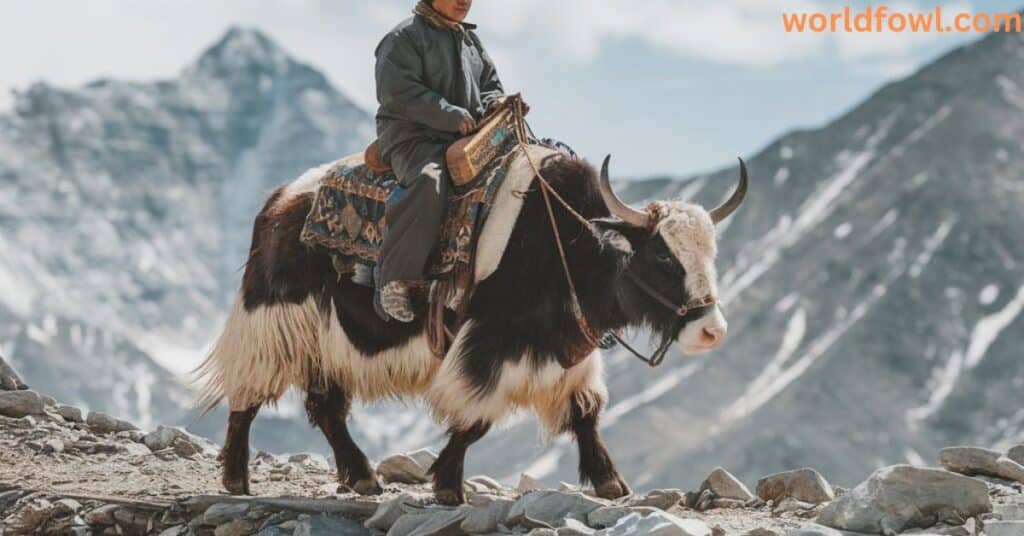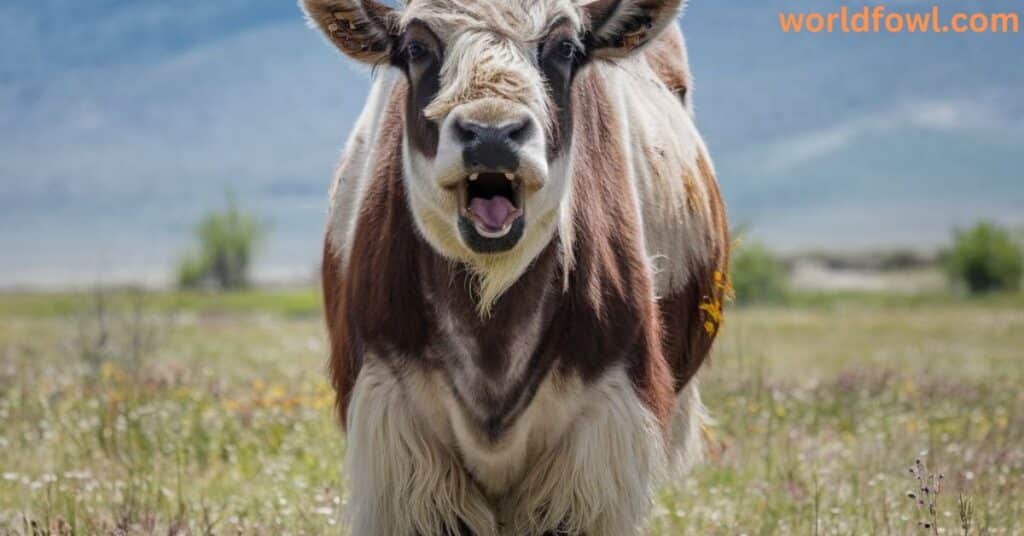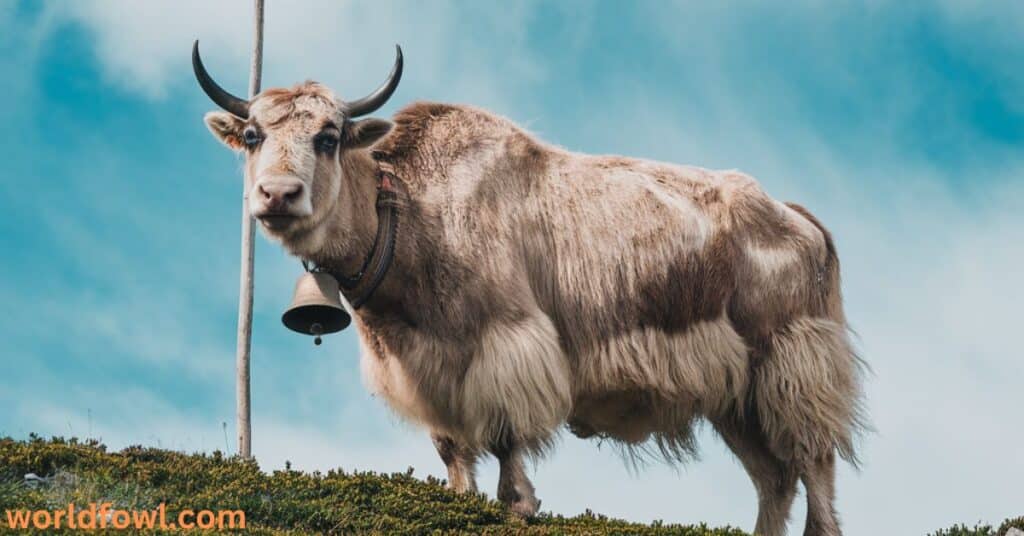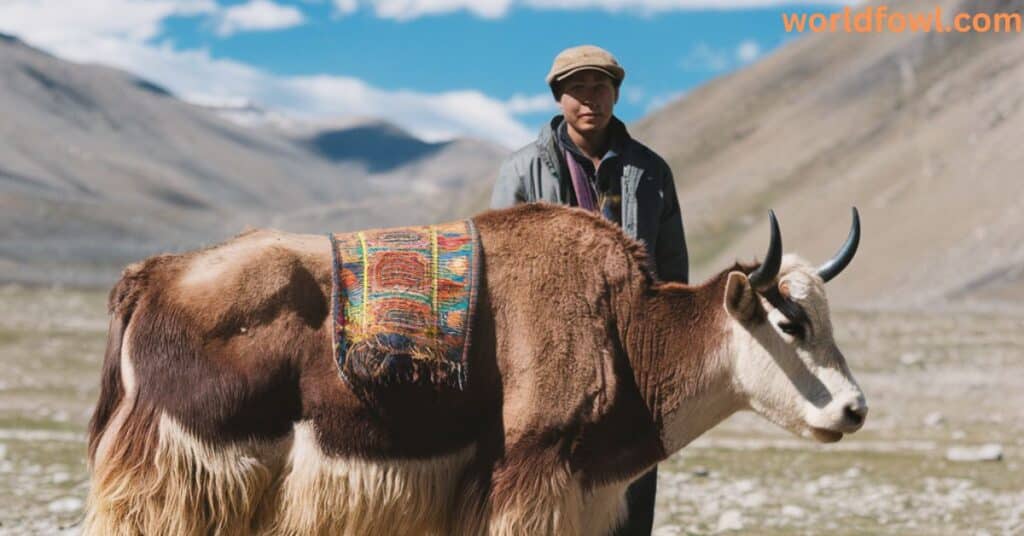Yaks, with their muscular build, thick coats, and curved horns, are often seen as some of the most impressive animals to roam the rugged Himalayan region and Tibetan Plateau. They are crucial to the local people, providing meat, milk, wool, and transportation across harsh, high-altitude terrains. However, despite their important role in human societies, the question remains: Do Yak Attack Humans? Understanding the temperament and behaviors of yaks is essential for ensuring safe interactions, especially given that they are large and powerful animals with strong instincts.
In this comprehensive guide, we will take an in-depth look at yak behavior, aggression, and their potential to harm humans. We will explore the conditions under which wild yaks or domesticated yaks may become dangerous, examine reported incidents, and provide valuable insights into how to safely interact with these magnificent creatures.
What Are Yaks?

Before delving into their aggressive tendencies, it’s important to understand the species and their role in the wild and domesticated environments. Yaks are primarily divided into two groups: wild yaks and domesticated yaks.
Wild Yaks vs. Domesticated Yaks
- Wild Yaks: These animals are found in the Tibetan Plateau, Himalayan region, and other mountainous regions of Central Asia. Wild yaks are typically larger and more solitary than their domesticated cousins, living in herds that protect one another from predators. Their territorial instincts are much stronger, as they need to defend themselves from predators like snow leopards and wolves. These yaks are adapted to survive in the wild, with their thick, woolly coats protecting them from freezing temperatures that can reach -40°F.
- Domesticated Yaks: Humans have tamed yaks over centuries to serve as pack animals, help with livestock management, and provide various products like milk, meat, and wool. These yaks are typically less aggressive than their wild counterparts because they are raised in controlled environments. However, domesticated yaks still retain some of the territorial behavior and defensive instincts of their wild relatives, especially when they are provoked or feel threatened.
Physical Characteristics of Yaks
Yaks are easily recognizable due to their unique features. Their muscular build and thick coats allow them to endure harsh climates, and their curved horns serve as effective tools for self-defense.
- Size: Adult yaks can weigh between 600 to 1,200 pounds, with males being generally larger than females. Their muscular build allows them to carry heavy loads across rugged terrain.
- Fur: The long, dense coat of a yak serves as insulation against freezing temperatures in the high-altitude environments they inhabit. Their wool is highly prized for its warmth and is used to make clothing and textiles.
- Horns: Both male and female yaks have horns that curve outward, but males have larger, more prominent horns. These horns are used for self-defense, especially during conflicts with other yaks or predators.
Yaks’ Role in High-Altitude Living
Yaks are well-suited to life in mountainous regions and cold climates. They are crucial to the economies of many communities in the Himalayan region, where they serve not only as working animals but also as symbols of resilience. Yaks are used for transportation, moving goods across difficult terrain where traditional vehicles cannot go. They are also prized for their milk and meat, which form essential parts of the local diet.
Here’s the “What Are Yaks?” section in table form:
| Category | Details |
|---|---|
| Species | Yak (Bos grunniens) |
| Habitat | Himalayan region, Tibetan Plateau, high-altitude areas of Central Asia |
| Domesticated vs. Wild | Two main types: Domesticated yaks (used for livestock, transportation, milk, meat, wool) and wild yaks (live in the wild, larger, solitary) |
| Size | Adult yaks weigh between 600-1,200 pounds; males are larger than females |
| Physical Features | Muscular build, thick coat for insulation, curved horns used for self-defense |
| Diet | Herbivores; feed on grasses, herbs, and shrubs found in mountainous terrains |
| Role | Important for livestock management, providing milk, meat, wool, and used as pack animals in difficult terrains |
| Temperament | Generally calm but can be territorial and defensive when threatened |
| Behavior | Live in herds for protection, especially in the wild; males may become aggressive during mating season |
| Lifespan | Typically 15-20 years in the wild, but can live longer in captivity under ideal conditions |
This table provides a concise overview of the essential characteristics of yaks, distinguishing between their domesticated and wild forms.
See Also : Do Capybaras Attack Humans? The Truth!
Are Yaks Aggressive?: Do Yak Attack Humans

At first glance, yaks may seem like peaceful, slow-moving creatures, but they can become aggressive if they feel threatened. It’s important to differentiate between natural behaviors and actual aggression, as many people misunderstand these animals’ reactions.
Natural Aggression Triggers in Yaks
While domesticated yaks are generally less aggressive than wild yaks, they are still capable of aggressive behavior under certain conditions. Yaks are typically calm and non-threatening when left undisturbed, but there are specific triggers that can cause them to act defensively. Understanding these triggers is essential for anyone who lives with or interacts with yaks.
- Territorial Behavior: Yaks are naturally territorial animals, especially during certain times of the year, like mating season. A male yak will aggressively defend its territory and might attack other males or even humans who come too close. This behavior is driven by the need to protect resources and establish dominance.
- Offspring Protection: Female yaks are fiercely protective of their young. A mother yak will attack any perceived threat to her calf, which can include other animals, humans, or even objects that seem suspicious. This maternal behavior ensures the survival of the offspring in the wild, where predators are a constant danger.
- Stress and Overcrowding: Yaks are generally calm animals, but stress can significantly alter their behavior. In confined spaces, such as overcrowded farms or during transportation, they may become agitated. Environmental stressors, like sudden changes in temperature, overcrowding, or hunger, can trigger defensive responses. Yaks that are not accustomed to human handling might react violently if they feel cornered or threatened.
Are Yaks Aggressive Towards Humans?
While yaks can become aggressive, Do Yaks Attack Humans? are relatively rare, especially when proper precautions are taken. These attacks are usually the result of the yak feeling threatened or provoked. To put it simply, yaks attack humans when they perceive them as a threat to their territory or offspring.
For instance, domesticated yaks may lash out if someone gets too close to their calves. Similarly, during the mating season, males are more territorial and can become aggressive towards humans who enter their space. It’s also important to note that yaks, like many animals, are more likely to become aggressive if they are startled or provoked.
See Also : Can Birds Eat Chia Seeds? (And Should They?)
Reported Incidents of Yak Attacks

Though rare, there have been a few reported incidents of yaks attacking humans, usually in areas where humans and yaks share close proximity.
Case Studies of Yak Attacks
- Case Study 1: Rural Encounter in Tibet
In one reported incident, a yak in a rural Tibetan village charged at a farmer who was trying to separate it from its calf. The farmer was knocked to the ground but fortunately was not seriously injured. The yak’s reaction was typical of maternal behavior; it was merely protecting its young from a perceived threat. - Case Study 2: Tourist Incident in the Himalayas
Another notable incident involved a group of tourists trekking through the Himalayan region. A yak, startled by a loud noise, began to charge. The tourists panicked, which only exacerbated the situation. Though no one was harmed, the attack highlighted the importance of approaching yaks safely and respecting their space.
Common Causes of Yak Aggression
- Proximity to Offspring: As seen in the cases above, the most common reason yaks become aggressive is when they are protecting their young. Female yaks will attack any perceived threat to their calf, which is why it’s essential to maintain a safe distance from newborn yaks.
- Mating Season: During the mating season, male yaks can become territorial. They may see other males, or even humans, as threats to their dominance and respond aggressively. This is common among many species and is a form of defensive behavior.
- Perceived Threats: Yaks will also attack when they feel cornered or threatened. Humans who unknowingly get too close to a yak, especially in a mountainous or crowded environment, might trigger an aggressive response.
See Also : Do Pandas Attack Humans? Cuddly Yet Deadly?
Why Do Yaks Attack?

Understanding why yaks may attack humans involves considering several factors that influence their behavior. These include territorial instincts, stress triggers, and their protective nature.
Maternal Protection
Mother yaks have a strong desire to protect their offspring. If a human approaches a calf, the mother may feel threatened and react aggressively. This is a basic survival instinct, ensuring the calf’s safety from predators.
Territorial Instincts
Males, especially, exhibit territorial behavior and are known to defend their space vigorously. This is most common during mating season, but can occur year-round if the male feels that another animal or human is encroaching on his territory. Mating behavior often heightens aggression, as males fight for dominance and access to females.
Stress and Overcrowding
Yaks in captivity or crowded conditions may experience heightened stress. In rural encounters with yaks, such as when they are used as pack animals or farm livestock, these stressors can result in defensive aggression. Animals under stress may lash out if they feel trapped or threatened.
See Also : Do Praying Mantis Attack Humans? Praying Mantis vs. Humans!
How to Stay Safe Around Yaks

While yak attacks are not common, it’s important to follow proper guidelines for interacting with these animals to minimize the risk of aggression.
Recognizing Warning Signs
Yaks give clear signals when they feel threatened or agitated. Knowing how to recognize these warning signs can help you avoid getting too close to an upset yak. Common signs include:
- Raised Fur: When a yak’s fur stands on end, it is often a sign that the animal feels threatened.
- Head-Bobbing: If a yak begins bobbing its head or pawing at the ground, this is a sign of agitation.
- Direct Staring: Yaks that stare directly at you are likely asserting dominance. Do not stare back, as this can escalate the situation.
Approaching Yaks Safely
When encountering yaks, always follow these steps:
- Give Space: Maintain a safe distance. Yaks are generally peaceful but become defensive if they feel cornered.
- Move Slowly: Sudden movements can startle a yak. Move deliberately and avoid making any sudden gestures.
- Don’t Engage: If a yak is acting agitated, it’s best to retreat slowly without turning your back. Running away may trigger the yak’s defensive instincts.
Handling Aggression
If a yak becomes aggressive, it’s crucial to stay calm. Yaks are much less likely to attack if they sense that you are not a threat. Backing away slowly and giving the yak space is the safest option.
Conclusion: Do Yak Attack Humans
In conclusion, do yak attack humans . While the chances of being attacked by a yak are low, it’s important to understand their territorial instincts, maternal behavior, and the factors that can trigger aggression. Yaks, by nature, are not prone to attacking humans, but they will defend themselves, their calves, and their territory when they feel threatened.
Respecting yaks’ space, understanding their behavioral and maternal instincts, and knowing how to recognize warning signs can help avoid unwanted confrontations. By following safe interaction practices, we can ensure that yaks continue to play their vital role in high-altitude living without posing a risk to those around them.
See Also : Spiritual Meanings Of A Dog Running Away
FAQs: Do Yak Attack Humans
Are yaks dangerous to livestock?
Yaks are not typically a direct threat to other livestock unless they feel their territory or offspring are being threatened. However, like many large animals, they can engage in aggressive behavior when defending their space.
How do you know when a yak is angry?
Signs of an angry or agitated yak include raised fur, snorting, pawing at the ground, and direct eye contact. These behaviors are often warnings to stay away.
Can yaks be kept as pets?
Yaks are not traditionally kept as pets. However, they can be tamed and used as livestock or pack animals. Yaks require a lot of space and proper care, especially in cold climates.
What should you do if you encounter a yak in the wild?
Stay calm, avoid eye contact, and slowly back away from the yak. Do not make sudden movements or attempt to interact with it.
Do yaks prefer solitude or groups?
Yaks are social animals and generally live in herds. They have a strong herd mentality and rely on each other for protection, especially in the wild.

Henry James is a seasoned blogger and a passionate storyteller on “World Fowl.” With years of experience crafting engaging content, he brings a unique blend of expertise and creativity to his writing. Henry specializes in exploring diverse topics with depth and clarity, captivating readers worldwide.







